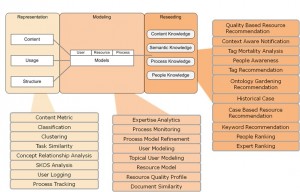Although Google+ has been generally welcomed the advent of yet another social networking site has given rise to some thoughts on just exactly what value such sites are.
In a perceptive blog post George Siemens writes:
I’ve concluded that most of the hype around social media is nonsense and that people, particularly the self-proclaimed social media elite are clothing-less……What has social media actually done? Very, very little. The reason? Social media is about flow, not substance…….Twitter/Facebook/G+ are secondary media. They are a means to connect in crisis situations and to quickly disseminate rapidly evolving information. They are also great for staying connected with others on similar interests (Stanley Cup, Olympics). Social media is good for event-based activities. But terrible when people try to make it do more – such as, for example, nonsensically proclaiming that a hashtag is a movement. The substance needs to exist somewhere else (an academic profile, journal articles, blogs, online courses).
It is difficult not to agree. Even on twitter – to date my preferred social network – the ratio of conversation to proclamation – or information sharing – seems to be decreasing. Or is this a reverse power effect – is it that the more people you follow the less the social interactions?
I think the problem is context. Social media work well in a particular context – be it talking with close friends and family – keeping people up to date on your movement or planning holidays – or around conferences and events, planning projects or seeking jobs. However social media is far less strong in the context of everyday life flows. Indeed the only aspect of context that social media seems good at is geo-awareness with all the privacy issues that brings.
It may be important though to distinguish between social media ‘in the wild’ – Facebook, Twitter and Google+ web sites – and the integration of social media within more specific and contextually defined web tools to support activities, learning or communities. Twitters success may be down to its relatively open development environment making it easy to embed twitter flows into blogs or community web sites.
Not withstanding the debate over the use of real names in Google+ and acknowledging the interest in the playful use of alternative identities, the issue of linking real life worlds and social media worlds seems an important one. As George says “substance needs to exist somewhere else”. But whilst George is posting that substance in the academic world, such substance may lie in different facets of our lives – within work, play or the community.
Yet I suspect those corporations developing social media applications have little interest in such substance. The substance for them is in the advertising and commercial world which produces them profit, the ultimate arbiter of success for social media companies. I have written before that the future of social media may lie in more focused and niche networks and communities – communities which can link our online and off line activities and enrich both. But such communities will have to be developed from the bottom up. And in this context the issue of design will involve much more than cool tools and applications – or indeed encouraging us to follow ever more ‘friends’.
